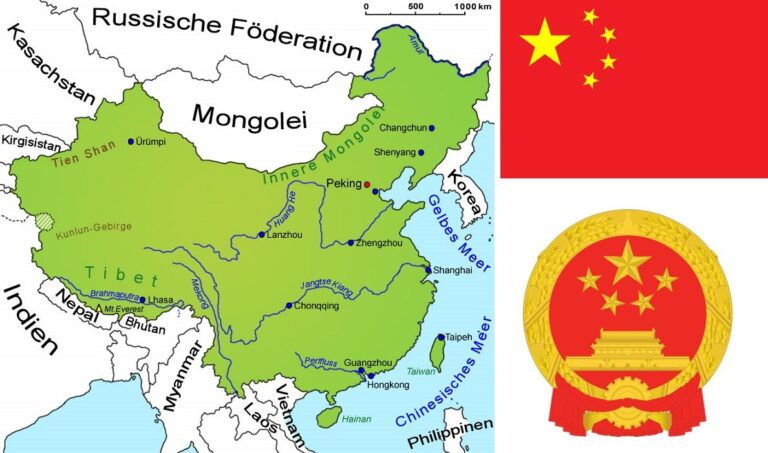As the ongoing conflict between Israel and Iran captures global attention and diverts U.S. focus, China is seizing the moment to advance its diplomatic agenda on the world stage. In a strategic move reflecting Beijing’s expanding geopolitical ambitions, Chinese officials have intensified outreach efforts across the Middle East and beyond, positioning the nation as a key mediator and power broker amid escalating regional tensions. This diplomatic offensive underscores China’s intent to fill the vacuum left by a distracted America, signaling a potential shift in international influence during one of the most volatile periods in recent Middle Eastern history.
China Expands Influence in Middle East Amid US Preoccupation with Israel-Iran Conflict
As the United States remains deeply engrossed in managing the escalating Israel-Iran conflict, China has seized the opportunity to significantly boost its foothold across the Middle East. Beijing’s strategy involves a multi-pronged diplomatic offensive, leveraging economic investments, energy partnerships, and regional security dialogues to position itself as an indispensable player. This approach not only counters Western influence but also taps into the region’s growing desire for diversified alliances amid global geopolitical shifts.
Key elements of China’s expanding Middle East policy include:
- Infrastructure Development: Financing and constructing transport corridors that connect Asia to Europe through the Middle East, improving trade flows under the Belt and Road Initiative.
- Energy Security: Securing long-term oil and gas contracts with Gulf states and Iran to fuel its voracious energy appetite.
- Military Cooperation: Conducting joint naval exercises and offering arms deals to bolster regional defense ties without overt political entanglement.
| Country | Recent Chinese Engagement | Strategic Focus |
|---|---|---|
| UAE | Investment in renewable energy projects | Economic diversification |
| Saudi Arabia | Oil supply agreements | Energy security |
| Iran | Military technology cooperation | Defense collaboration |
Strategic Moves and Partnerships Reveal Beijing’s Long-Term Regional Ambitions
Amid a global geopolitical landscape increasingly defined by uncertainty, Beijing has accelerated its outreach through a series of carefully choreographed partnerships aimed at expanding its influence across Asia and beyond. By deepening economic ties and leveraging strategic investments, China is reinforcing its position as a dominant regional power while simultaneously filling voids left by distracted Western powers. These moves underscore a methodical approach to shaping regional dynamics in its favor, particularly through expanding connectivity projects under the Belt and Road Initiative and fostering alliances that challenge the traditional US-led security architecture.
- Infrastructure Development: Massive funding in critical ports, railways, and energy sectors in Southeast Asia and Central Asia.
- Military Collaborations: Increased joint exercises and technology exchanges with regional powers, enhancing strategic deterrence capabilities.
- Diplomatic Engagements: Hosting multilateral forums and forging bilateral agreements aimed at counterbalancing US influence.
| Partnership Type | Key Region | Strategic Impact |
|---|---|---|
| Economic | South Asia | Critical trade corridor & resource access |
| Security | East Asia | Enhanced joint defense capabilities |
| Diplomatic | Middle East | Influence over energy politics and alliances |
The timing of these maneuvers, coinciding with America’s distraction in the Israel-Iran conflict, reveals a calculated strategy designed to exploit shifting global priorities. Beijing’s diplomatic offensive is not merely opportunistic but embedded in a longer-term vision – one that seeks to reshape regional power constructs and secure China’s economic and political interests well into the future. This subtle, yet assertive, approach suggests that China is not only reacting to current events but proactively framing the next era of international relations.
Experts Urge Washington to Reassess Diplomatic Priorities to Counter Growing Chinese Presence
Leading analysts warn that the current U.S. focus on the Israel-Iran conflict has inadvertently created a strategic vacuum, allowing China to expand its influence across key geopolitical hotspots. Experts emphasize the need for Washington to recalibrate its diplomatic strategies to address Beijing’s growing presence in regions traditionally under American influence. Failure to act swiftly, they argue, could result in a permanent shift in the balance of power, affecting global security frameworks and trade dynamics.
According to recent assessments, China’s diplomatic offensive leverages several dimensions, including economic investments, military partnerships, and cultural outreach. Key suggested actions for the U.S. to consider include:
- Reinforcing alliances with Indo-Pacific and Middle Eastern nations.
- Enhancing intelligence-sharing mechanisms to monitor Chinese activities.
- Investing in diplomatic channels beyond conventional security frameworks.
| Region | Chinese Influence Expansion | Recommended U.S. Response |
|---|---|---|
| Middle East | Increased economic aid and arms sales | Diplomatic engagement and arms control talks |
| Indo-Pacific | Strengthening military presence and port access | Boost joint military exercises |
| Africa | Infrastructure investments and resource deals | Expand development cooperation programs |
Future Outlook
As the Israel-Iran conflict continues to command global attention and strain U.S. diplomatic bandwidth, China is seizing the moment to expand its influence on the international stage. By advancing strategic partnerships and strengthening ties across the Middle East and beyond, Beijing aims to reshape regional dynamics while Washington remains preoccupied. The unfolding developments underscore a pivotal shift in global diplomacy, signaling that the balance of power may be quietly tilting as old alliances are tested and new ones forged.




